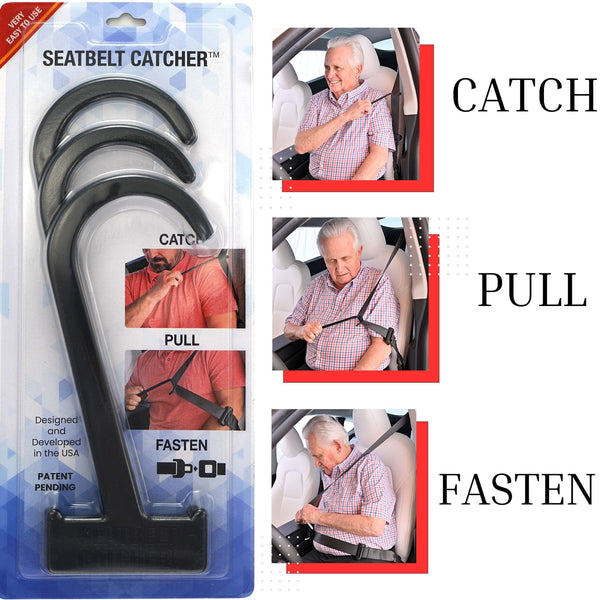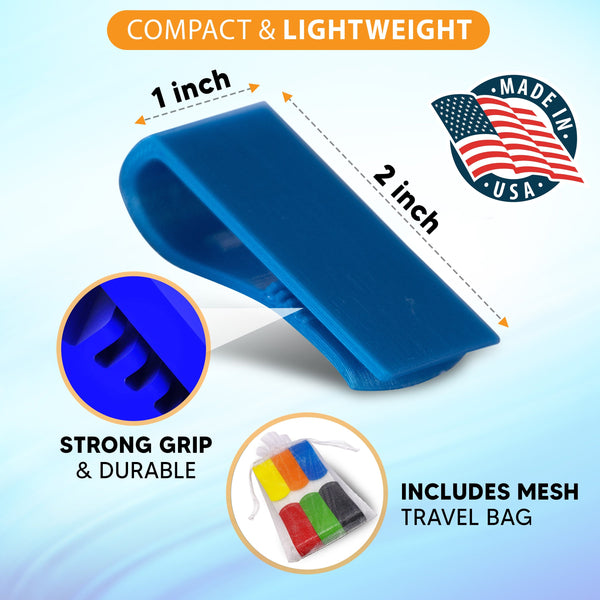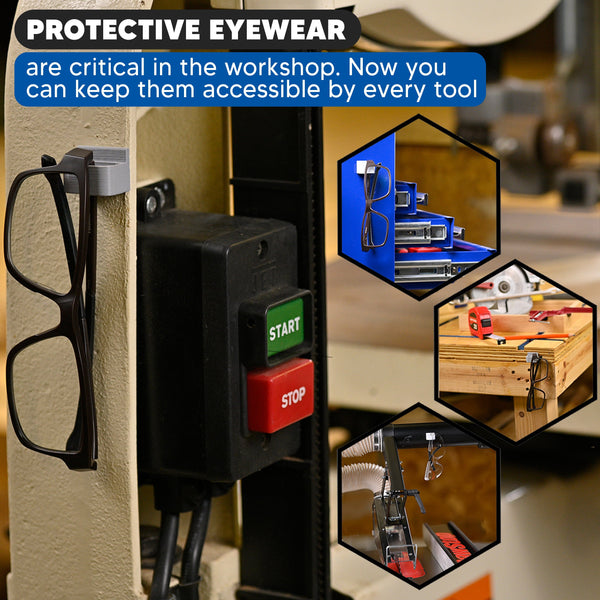As we journey through life, numerous transitions shape our daily routines and experiences. Among these changes, many seniors find that their ability to drive often becomes a focal point of concern as they age. For seniors over 60, maintaining driving independence is not just a necessity; it’s a critical component of an active lifestyle. Without the freedom of driving, the daily adventures that foster connection and joy may feel limited. In this article, we'll explore the importance of driving independence, tips to sustain it, helpful tools like the seatbelt catcher, and alternatives if driving becomes challenging.
The Importance of Driving Independence
Driving represents more than just a means of transportation; it encapsulates freedom, independence, and the ability to engage with the world. For seniors, being able to drive means visiting friends, attending social gatherings, maintaining appointments, and engaging in leisure activities that enhance quality of life. A survey by the AARP highlights that around 90% of adults aged 50 and older deem driving as essential for their independence. This connection underscores the emotional weight that driving carries in their lives.
Research has shown that when seniors can maintain their driving independence, they tend to lead healthier, more active lives. It allows them to retain their social circles, which are crucial for emotional well-being. Driving facilitates spontaneous outings, from grocery shopping to museum visits, and it opens doors to new experiences that enrich life in profound ways. However, this sense of freedom can be accompanied by certain challenges, emphasizing the importance of understanding how to navigate them.

Assessing Your Driving Abilities
Before exploring tactics to maintain driving independence, it’s vital to perform a self-assessment of your driving skills and comfort level. This self-evaluation is essential for ensuring safety on the road. Consider these reflective questions:
- Do you feel at ease when driving, or do you experience anxiety?
- Have you noticed any changes in your reaction time or judgment on the road?
- Are you finding it increasingly difficult to navigate busy intersections or merge into traffic?
- Are you aware of any recent changes to your vision or hearing that might affect your driving?
If you answer “yes” to any of these concerns, it might be beneficial to enroll in a driving refresher course designed specifically for seniors. Many communities offer these courses, focusing not only on skills but also on enhancing confidence behind the wheel. Additionally, some organizations provide educational resources on age-related changes that can impact driving abilities.
Essential Tips for Maintaining Driving Independence
With thoughtful planning and awareness, it is possible for seniors to continue driving safely. Here are several practical tips for ensuring ongoing driving independence:
Regular Vehicle Maintenance
Keeping your vehicle in optimal condition is critical for safe driving. Invest time in regular maintenance checks, as they can prevent potential issues from escalating into serious problems. Pay attention to the following aspects:
- Brakes: Make sure your brakes respond immediately and do not emit strange sounds.
- Tires: Regularly check tire pressure and tread depth. Tires should be replaced if they show excessive wear or damage.
- Fluids: Consistently monitor oil, coolant, brake fluid, and windshield washer fluid levels.
- Lights: Regularly check that all lights, including headlights, brake lights, and turn signals, are functioning properly.

Having a reliable vehicle can bolster both confidence and safety on the road. If you're unsure about your car's condition, consider taking it to a trusted mechanic for a comprehensive check-up.
Using Adaptive TechnologyModern advancements in vehicle technology have made driving more accessible and safer for seniors. Many vehicles come equipped with features designed to assist with navigation and safety, including:
-
Rearview cameras that offer a wider field of vision for reversing.
-
Blind-spot detection systems that alert drivers to oncoming vehicles
-
Adaptive cruise control that helps maintain a safe following distance.
In addition to these high-tech features, tools like the seatbelt catcher are invaluable for seniors. This simple device aids in reaching the seatbelt, making it easier to buckle up without straining or twisting awkwardly. With a secure seatbelt, seniors can feel safe and comfortable, empowering them to drive with confidence.
Plan Your Routes WiselyBeing strategic about your routes can significantly reduce stress while driving. Opt for familiar roads that you are comfortable navigating. Here are a few tips for planning your routes:
- Choose less congested streets and routes with lower speed limits to promote safety.
- Avoid driving during rush hours when traffic can be overwhelming.
- Utilize GPS technology to guide you, particularly for unfamiliar destinations.

By taking time to plan your trips, you can minimize anxiety and enhance your overall driving experience.
Stay Physically ActiveStaying physically active is crucial for maintaining your driving independence long-term. Regular exercise can enhance strength, agility, and flexibility, which are all vital for safe driving. Engage in exercises that promote reflex and reaction time, including:
- Walking: A simple yet effective way to improve endurance.
- Swimming: A low-impact exercise that increases flexibility and strength.
- Yoga: Practicing yoga can improve coordination, balance, and range of motion.
Additionally, incorporating stretches before getting in the car can help with mobility, particularly in reaching for the seatbelt or adjusting mirrors, ensuring a smooth start to your trip.
Have Regular Health Check-UpsYour overall health plays a significant role in your driving abilities. Be proactive by scheduling regular check-ups with your healthcare provider, especially for:
- Vision: Your eyesight is crucial for spotting hazards and recognizing road signs. Get regular eye exams to assess your vision.
- Hearing: Hearing is just as important as vision when it comes to driving. Regular hearing tests will help identify any issues that could impair your ability to hear sirens or honking horns.
- Medications: Always review your medications with your doctor, as some can cause drowsiness or impair your ability to drive.

Staying on top of your health will not only contribute to safer driving but also promote an active and fulfilling lifestyle.
The Role of Support SystemsMaintaining driving independence doesn't have to be a solitary journey. Having a robust support system can encourage safe driving and provide a sense of community. Consider the following:
- Family and Friends: Openly discussing your driving skills with family members and close friends can help you gain insights into how they perceive your driving abilities. They can also accompany you on drives, offering feedback and support.
- Community Programs: Many local organizations offer resources, workshops, and training tailored to senior drivers. These programs can foster learning and build a sense of community among seniors.
By engaging with others and seeking their support, you can bolster your confidence and improve your driving skills.
Alternatives if Driving Becomes Challenging Even with our best efforts, there may come a time when driving becomes more challenging. Recognizing this beforehand can help ease the transition when that time arrives. Here are a few alternatives to consider:- Public Transportation: Many cities have comprehensive public transportation systems that offer discounts for seniors. Familiarizing yourself with these options can provide freedom when needed.
- Ride-Sharing Services: Apps like Uber and Lyft have become safety nets for those seeking transportation. They offer easy access to rides at the touch of a button, allowing you to travel without the need for a personal vehicle.
- Community Shuttles: Some communities offer shuttle services specifically for seniors, providing transportation to essential services and social events.
- Carpooling: Connecting with friends and neighbors to share rides can be a practical solution, allowing for social interaction while reducing the burden of driving.

Exploring these alternatives can ensure that you remain engaged and active in the community, even if driving is no longer viable.
Staying Informed About Traffic Laws
The Emotional Side of Driving Independence























